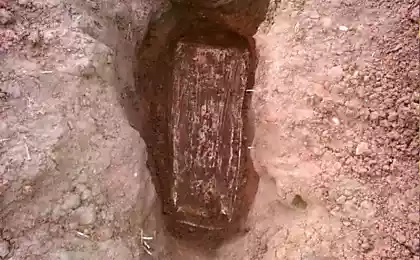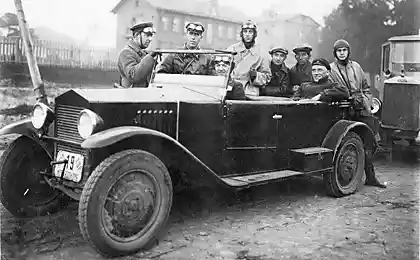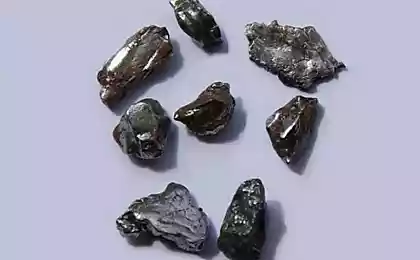191
Childhood, adolescence and youth in Roman Egypt
Having studied a collection of 7.5 thousand papyri, the researchers made a picture of how children lived in ancient Egypt during the Roman rule.
In Roman Egypt, 14-year-old boys were enrolled in a youth organization to teach them how to be good citizens. So says historian Willy Vuolanto of the University of Oslo, who together with his colleague Dr. April Pudsey from the University of Nucastle studied more than 7.5 thousand ancient documents written on papyrus. Researchers were attracted to literary texts, personal letters, and administrative documents. Never before had the subject of childhood in Roman Egypt been systematically studied on such a broad base of sources.

The documents come from Oxirinh, an Egyptian city (160 km southwest of Cairo), whose population in the first five hundred years of our era was about 25,000 inhabitants. Oxyrhynchus was the most important center of weaving in Egypt, as well as the Roman administrative center. A huge number of papyri comes from the excavations of this city, lasting more than 100 years. The documents are preserved due to the special natural conditions – the soil is very dry. In addition, there are no modern settlements on the site of Oxyrynch.
The authors of the study call the urban “youth organization” the gymnasium, an educational institution widely spread in the Greek world. Only boys born free could study there. Among them were children of Egyptians, Greeks and Romans. Their families had to have an income that allowed them to be in the tax class of 12 drachmas. How much of the population had such an income is unclear. According to Willy Vuolanto, about 10-25% of citizens had such an income.
The girls could not become members of the gymnasium, but are often referred to in administrative documents as the boys' sisters. Perhaps it had something to do with family status or tax class. Both girls and women could own property, but they had to have a male guardian.
Registration in the gymnasium became for boys from wealthy families a transition to adulthood. Other boys started working before they reached adolescence. In the status of students they spent from two to four years. The researchers found about 20 apprenticeships at Oxyrinch, most of them related to weaving. Men were not considered fully adults until they married at the age of 20-25.
Most of the girls stayed at home and worked there. They tended to marry in their late teens, a little earlier than boys. “We found only one contract where the student was a girl. But her situation was a little unusual – she was not only an orphan, but also had to pay the debts of her late father.
The children of slaves were also able to become apprentices; they entered into contracts that were similar to those made by freeborn boys. The slave students lived either in the homes of their owners or in the homes of their teachers. However, the lives of slave children were different. The researchers found documents showing two-year-olds being sold and separated from their parents.
Little is known about the lives of young children. More or less complete information appears only when they begin to appear in official documents, and this happened only in early adolescence. The kids probably started doing some light work at the age of seven or nine. They may have acted as shepherds or collected firewood and dung to burn.
“It’s like putting together a puzzle. By examining papyri, ceramic fragments with inscriptions, toys and other objects, we try to get a picture of how children lived in Roman Egypt.
In Roman Egypt, 14-year-old boys were enrolled in a youth organization to teach them how to be good citizens. So says historian Willy Vuolanto of the University of Oslo, who together with his colleague Dr. April Pudsey from the University of Nucastle studied more than 7.5 thousand ancient documents written on papyrus. Researchers were attracted to literary texts, personal letters, and administrative documents. Never before had the subject of childhood in Roman Egypt been systematically studied on such a broad base of sources.

The documents come from Oxirinh, an Egyptian city (160 km southwest of Cairo), whose population in the first five hundred years of our era was about 25,000 inhabitants. Oxyrhynchus was the most important center of weaving in Egypt, as well as the Roman administrative center. A huge number of papyri comes from the excavations of this city, lasting more than 100 years. The documents are preserved due to the special natural conditions – the soil is very dry. In addition, there are no modern settlements on the site of Oxyrynch.
The authors of the study call the urban “youth organization” the gymnasium, an educational institution widely spread in the Greek world. Only boys born free could study there. Among them were children of Egyptians, Greeks and Romans. Their families had to have an income that allowed them to be in the tax class of 12 drachmas. How much of the population had such an income is unclear. According to Willy Vuolanto, about 10-25% of citizens had such an income.
The girls could not become members of the gymnasium, but are often referred to in administrative documents as the boys' sisters. Perhaps it had something to do with family status or tax class. Both girls and women could own property, but they had to have a male guardian.
Registration in the gymnasium became for boys from wealthy families a transition to adulthood. Other boys started working before they reached adolescence. In the status of students they spent from two to four years. The researchers found about 20 apprenticeships at Oxyrinch, most of them related to weaving. Men were not considered fully adults until they married at the age of 20-25.
Most of the girls stayed at home and worked there. They tended to marry in their late teens, a little earlier than boys. “We found only one contract where the student was a girl. But her situation was a little unusual – she was not only an orphan, but also had to pay the debts of her late father.
The children of slaves were also able to become apprentices; they entered into contracts that were similar to those made by freeborn boys. The slave students lived either in the homes of their owners or in the homes of their teachers. However, the lives of slave children were different. The researchers found documents showing two-year-olds being sold and separated from their parents.
Little is known about the lives of young children. More or less complete information appears only when they begin to appear in official documents, and this happened only in early adolescence. The kids probably started doing some light work at the age of seven or nine. They may have acted as shepherds or collected firewood and dung to burn.
“It’s like putting together a puzzle. By examining papyri, ceramic fragments with inscriptions, toys and other objects, we try to get a picture of how children lived in Roman Egypt.
Sound-absorbing Silenzio chandelier will keep quiet in the house
Luxury ampel ' — the principle of choice of plants and method of planting























